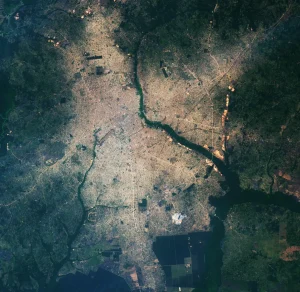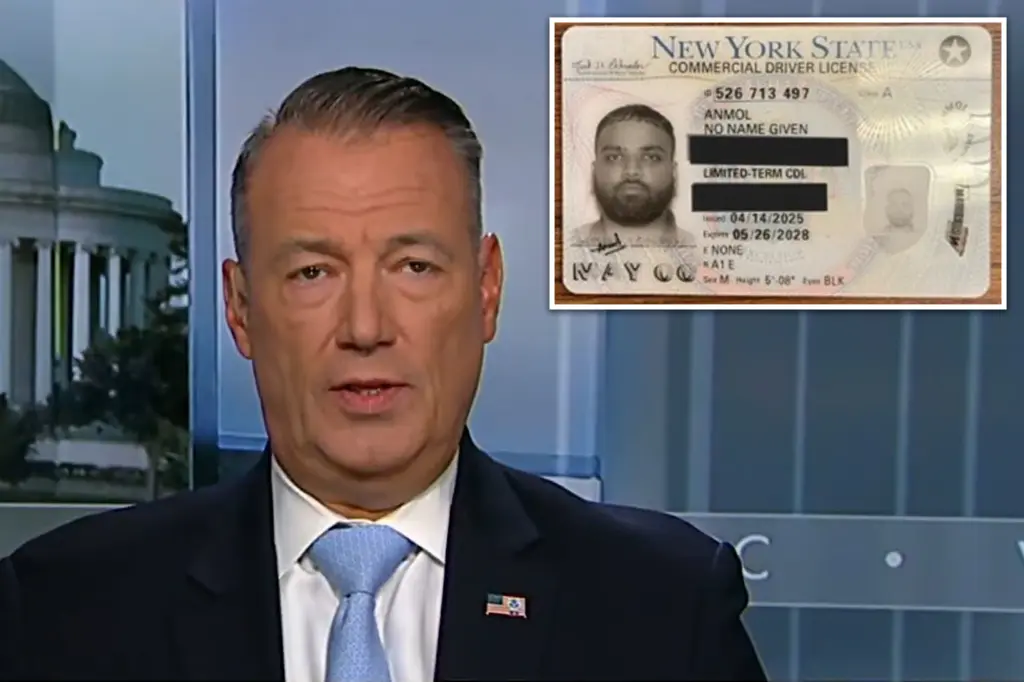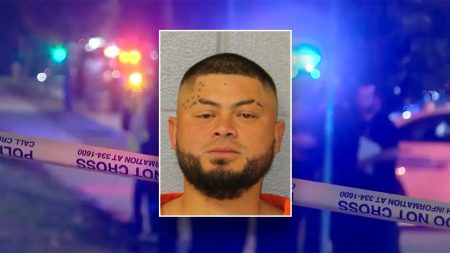The Controversy Over Commercial Driver’s Licenses for Undocumented Immigrants
In a heated public statement, Acting Immigration and Customs Enforcement (ICE) Director Todd Lyons expressed serious concerns about New York State’s practice of issuing commercial driver’s licenses (CDLs) to undocumented immigrants. His outrage was sparked by a recent case involving an Indian national named Anmol Anmol, who was arrested in Oklahoma last month during a routine inspection at an I-40 truck scale. What made this case particularly alarming to Lyons was that Anmol’s New York-issued CDL listed his first and middle names as “No Name Given,” yet still featured the REAL ID star, which normally requires rigorous identity verification. “I can’t believe we are giving illegal aliens, who have no right to be here, these driver’s licenses,” Lyons remarked during an appearance on Fox News’ “The Big Weekend Show.” The situation raises important questions about identification verification, immigration policy, and public safety on American roads.
The case details surrounding Anmol’s situation paint a complex picture of current identification and immigration practices. According to the Department of Homeland Security, Anmol had entered the United States illegally in 2023 during the Biden administration. When stopped in Oklahoma, authorities discovered his unusual New York State-issued ID that only identified him by his last name. The license, confirmed as authentic by the New York Department of Motor Vehicles, was issued on April 14 and is valid until May 26, 2028. What particularly concerned officials was that REAL IDs like the one Anmol possessed allow holders to board domestic flights and enter federal facilities without a passport. For most citizens, obtaining such identification requires providing multiple documents to prove identity, Social Security number, and state residency. Following his arrest, Anmol was placed into removal proceedings, but questions remain about how he obtained the license in the first place, with officials not revealing the specific circumstances.
The controversy extends beyond just identification issues to broader public safety concerns, particularly given that commercial driver’s licenses authorize individuals to operate large trucks that may carry hazardous materials. “We have these sanctuary states that want to go ahead and try to just make it welcoming to these people who we don’t even know who they are,” Lyons explained, emphasizing that CDL holders are “transporting hazardous goods, materials at times. And in some cases, we don’t know exactly what they are doing.” Lyons drew connections between such licensing practices and public safety, claiming that American citizens have lost their lives due to incidents involving drivers with questionable credentials. This reflects ongoing tensions between immigration enforcement priorities and sanctuary policies enacted by certain states, which limit cooperation with federal immigration authorities in an effort to protect immigrant communities.
To underscore his safety concerns, Lyons referenced a separate incident from April involving an Indian national named Harjinder Singh. In this case, Singh, who had obtained driver’s licenses in both California and Washington State, made an illegal U-turn in an 18-wheeler on a Florida highway, resulting in a crash that killed three Haitian migrants. Further investigation revealed that before acquiring his licenses, Singh had failed both an English language proficiency test and a highway sign exam. This case has been used to highlight potential gaps in the commercial driving licensing system and raise questions about whether language barriers might pose additional safety risks when commercial licenses are issued to individuals who may not fully comprehend road signs or driving regulations in English.
The situation has broader implications for America’s complex immigration landscape and highlights the tension between federal and state authorities. While federal agencies like ICE work to enforce immigration laws, some states have adopted policies that provide certain rights and privileges to undocumented immigrants, including access to driver’s licenses. Proponents of these policies argue that allowing undocumented immigrants to obtain licenses improves road safety by ensuring drivers are properly tested and insured, regardless of immigration status. Critics, including Lyons, contend that such policies undermine federal immigration enforcement and potentially create security risks by providing government-issued identification to individuals whose backgrounds may not have been thoroughly vetted. This fundamental disagreement about approach reflects deeper political divisions regarding immigration policy in the United States.
In response to these concerns, Lyons announced that the Department of Homeland Security is taking action in coordination with other law enforcement agencies. “Homeland Security Investigations has dedicated to working with the state police departments and our own federal agencies to make sure we get these IDs off the street,” he stated. This cooperative approach suggests that despite the tensions between federal immigration enforcement and state-level policies, there are efforts to find common ground on matters of identification security and public safety. The challenge moving forward will be balancing humanitarian concerns for immigrant communities with legitimate security considerations, all while navigating the complex interplay between federal authority and states’ rights. As this case demonstrates, even something as seemingly straightforward as a driver’s license can become a flashpoint in America’s ongoing immigration debate, reflecting deeper questions about identity, belonging, and security in a diverse society.








